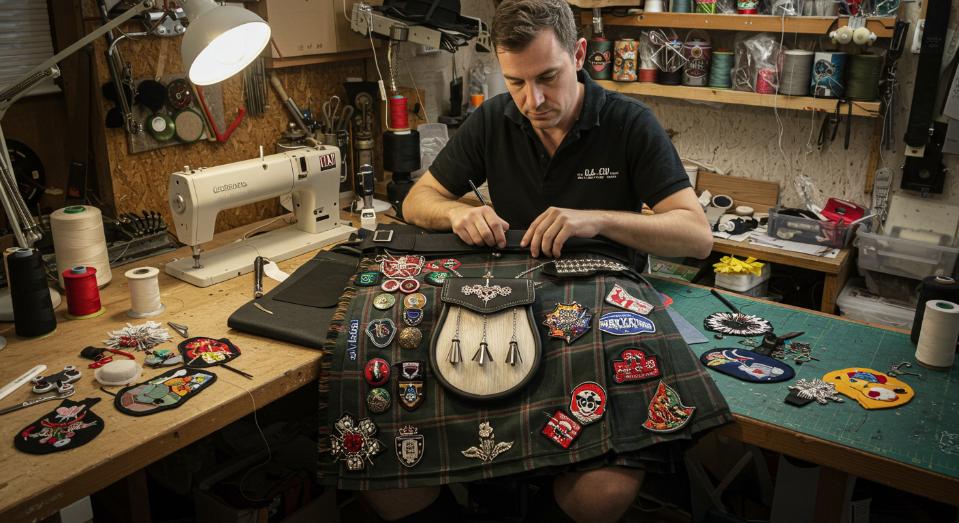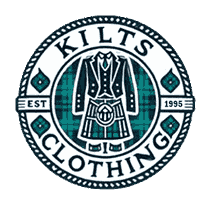DIY Guide: How to Customize Your Male Kilt with Accessories and Embellishments

The male kilt is a traditional garment that has transcended its historical roots to become a modern fashion statement. The kilt is versatile and timeless, whether worn for formal occasions, casual events, or as part of a personal style. However, what makes a kilt truly stand out is the personal touch added to it. Customizing your male kilt with accessories and embellishments enhances its aesthetic and reflects your unique sense of style. In this DIY guide, we will explore how to transform a classic kilts for men into a personalized masterpiece with just a few simple additions.
Why Customize Your Male Kilt?
Customizing your kilt allows you to inject your personality into this traditional garment, making it an extension of your identity. Whether you are wearing your kilt for a special event, as part of your everyday wardrobe, or for ceremonial purposes, customization offers the opportunity to express your individuality. A personalized man kilt fashion can tell a story about your heritage, personal preferences, or even your sense of humor. Moreover, customization ensures that your kilt fits seamlessly with your taste, elevating its appeal for every occasion.
Essential Accessories for Customizing Your Male Kilt
Customizing your kilt man starts with choosing the right accessories. Several essential elements can greatly impact the overall appearance of your kilt. Here are a few key accessories to consider:
1. Kilt Belts and Buckles
A kilt belt is not just practical but also plays a significant role in defining the look of your kilt. A leather belt is often the go-to option, offering durability and style. You can choose classic black or brown leather or a more contemporary look with a belt featuring intricate patterns or metal details. The buckle, which accompanies the belt, is also an important accessory. A traditional brass buckle is common, but you can choose something more ornate or modern to make a statement. Combining a well-chosen belt and buckle brings a sense of balance and sophistication to your kilt.
2. Kilt Pins
The kilt pin is a small but essential accessory that adds flair to your kilt. It is traditionally worn on the front apron of the kilt. It serves a functional purpose, helping to weigh down the fabric and prevent it from blowing around. However, the kilt pin has evolved into a decorative item in modern times. You can find kilt pins in various designs, from classic metal pins with Celtic symbols to contemporary ones with unique motifs. Choosing the right kilt pin helps to add a personal touch to your outfit while maintaining the garment's traditional charm.
3. Sporrans
The sporran is a traditional accessory worn with kilts, particularly for formal occasions. It hangs at the front of the kilt and serves as a functional pouch to hold personal items, such as keys, wallet, or phone. In addition to its practicality, the sporran adds a striking element to your kilt ensemble. You can choose from various sporran styles, from formal leather with intricate designs to more casual, modern choices. You can even choose a sporran that matches your kilt tartan or features custom embellishments for a personalized touch.
4. Kilt Hose
Kilt hose, or knee-high socks, are another important accessory that completes the kilt look. Typically worn with kilt flashes, the hose can be styled to suit casual and formal occasions. A classic white or black hose paired with a decorative pattern is ideal for formal events. For a more casual look, you can opt for those in bold colors or patterns that contrast with the kilt. Kilt hoses are not just about style—they also offer warmth and comfort, especially during colder months.
5. Kilt Flashes
Kilt flashes are small pieces of fabric worn just below the knee and secured with elastic bands, adding a colorful touch to your outfit. They are usually designed to match or complement the kilt hose and can be in various colors and patterns. Adding flashes is a great way to infuse flair into your kilt look. You can choose flashes matching your tartan's colors or experiment with bright, bold patterns that make a statement.
Adding Personal Embellishments
Once you have the essential accessories in place, it's time to explore how to add personal touches to your kilt. These embellishments can reflect your individuality through embroidery, monogramming, or the addition of patches and badges.
1. Embroidery and Monogramming
One of the best ways to make your kilt unique is by adding custom embroidery or monogramming. You can have your initials embroidered on the waistband or add a family crest or personal design on the kilt itself. Embroidery can be done by hand or with a sewing machine, depending on the complexity of the design. This custom touch is perfect for formal events or weddings, where the kilt can carry additional personal meaning.
2. Tartan and Patterns
Choosing the right tartan pattern is a personal decision that can add significant cultural or sentimental value to your kilt. You may choose a tartan that represents your family's heritage or a pattern that reflects your personal preferences. Modern kilts allow for much customization when it comes to tartan. There are endless possibilities for creating a one-of-a-kind design. Customizing your tartan is a great way to honor your ancestry or express your personality.
3. Patches and Badges
Patches and badges are another way to add individuality to your kilt. Whether you want to display a family crest, a military insignia, or a fun patch with a humorous slogan, these elements can personalize your kilt even further. Patches and badges can be sewn onto the kilt or attached using adhesive fabric tape. These additions add character to your kilt while allowing you to showcase personal achievements or affiliations.
4. Studs and Chains
Consider incorporating studs or chains into your kilt for a more modern and edgy look. These accessories can add a bold touch to your garment and make a statement. Studs can be placed along the waistband, while chains can be attached to the kilt for an alternative style. This customization option is especially popular for those who want a kilt that stands out in a crowd.
Step-by-Step DIY Customization Process
Customizing your male kilt can be a fun and rewarding process. Here is a step-by-step guide to help you get started:
- Preparation: Gather your kilt, accessories, and embellishments. Make sure you have everything you need before starting.
- Measuring and Fitting: Measure the areas where you want to add accessories, such as the waist for the belt and the length of the hose.
- Attachment Techniques: Use a needle and thread to sew on patches, monogramming, or other accessories. Make sure everything is secure.
- Quality Control: Double-check all attachments to ensure they are well-fixed and will not come loose.
Maintaining Your Customized Kilt
Once your kilt is customized, it's essential to maintain it. Store your kilt properly to preserve its shape and keep the accessories in good condition. Be sure to clean the kilt and accessories according to the manufacturer's instructions and regularly check for any signs of wear. With proper care, your personalized kilt will last for years to come.
Conclusion
Customizing your male kilt with accessories and embellishments is an excellent way to make it uniquely yours. Whether adding a simple kilt pin or going all-out with embroidery and modern accessories, these personal touches reflect your creativity and style. With the steps outlined in this guide, you can confidently customize your kilt for any occasion. So, start your DIY kilt customization journey and create a piece of clothing that truly represents you.


